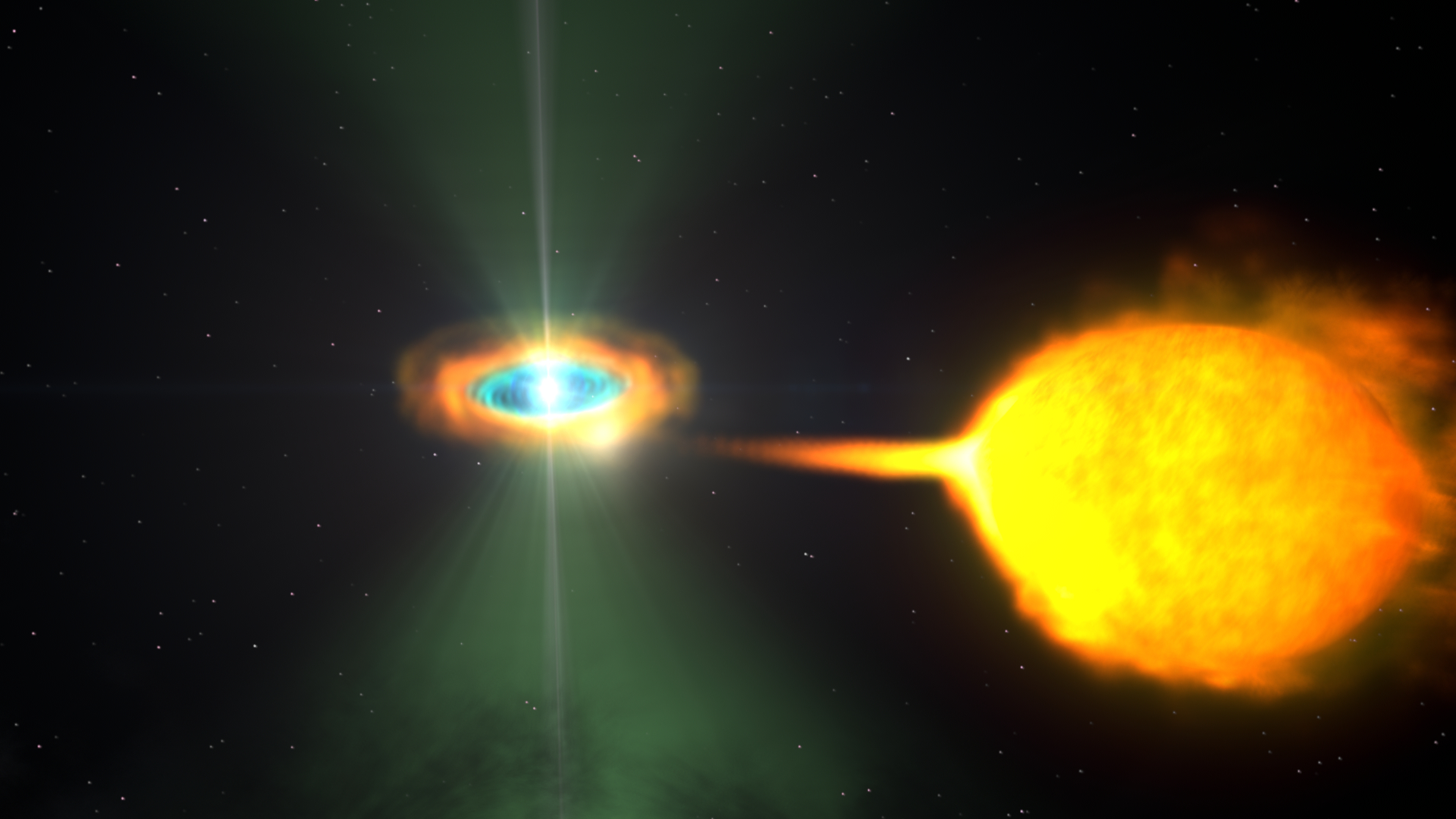PSR J1023, A 'Transformer' Pulsar—Animations
Pulsar J1023 is a member of an exceptional binary system containing a rapidly spinning neutron star. In June 2013, the pulsar underwent a dramatic change in behavior never before observed. Its radio beacon vanished, while at the same time the system brightened significantly in gamma rays, the highest-energy form of light.
The stellar system, known as AY Sextantis and located about 4,400 light-years away in the constellation Sextans, pairs a 1.7-millisecond pulsar named PSR J1023+0038 — J1023 for short — with a star containing about one-fifth the mass of the sun. The stars complete an orbit in only 4.8 hours, which places them so close together that a high-energy "wind" of charged particles from the pulsar is gradually evaporating its companion.
What's happening, astronomers say, are the last sputtering throes of the pulsar spin-up process, where a flow of matter from the companion has, over millions of years, dramatically increased the pulsar's rotation. J1023 now spins at about 35,000 rpm, but the gas stream from the companion is no longer continuous. Researchers regard the system as a unique laboratory for understanding how millisecond pulsars form and for studying details of how accretion takes place on neutron stars.
This animation illustrates one possible model for the dramatic changes observed from J1023. The two stars of AY Sextantis orbit closely enough that a stream of gas flows from the sun-like star toward the pulsar. The pulsar's rapid rotation and intense magnetic field produce both the radio beam and the high-energy wind, which is eroding its companion. When the radio beam (green) is detectable, the pulsar wind holds back the companion's gas stream, preventing it from approaching too closely. Now and then the stream surges, reaches toward the pulsar and establishes an accretion disk. Processes involved in producing the radio beam are either shut down or, more likely, obscured. Meanwhile, some of the gas falling toward the pulsar may be accelerated outward at nearly the speed of light, forming dual particle jets firing in opposite directions. Shock waves within and along the periphery of these jets are a likely source of the bright gamma-ray emission (magenta) detected by NASA's Fermi Gamma-ray Space Telescope.
Credit: NASA's Goddard Space Flight Center
This animation sequence places the camera closer to the pulsar and tracks the stars, highlighting the accretion disk and formation of the particle jets.
Credit: NASA's Goddard Space Flight Center
Credits
Please give credit for this item to:
NASA's Goddard Space Flight Center
-
Animator
- Cruz deWilde (Avant Gravity)
-
Producer
- Scott Wiessinger (USRA)
-
Writer
- Francis Reddy (Syneren Technologies)
Series
This page can be found in the following series:Tapes
The media on this page originally appeared on the following tapes:-
Transformer Pulsar
(ID: 2014055)
Thursday, July 10, 2014 at 4:00AM
Produced by - Robert Crippen (NASA)
Release date
This page was originally published on Tuesday, July 22, 2014.
This page was last updated on Wednesday, May 3, 2023 at 1:50 PM EDT.
